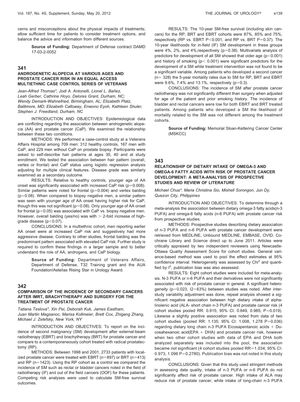Comparison of the Incidence of Secondary Cancers After IMRT, Brachytherapy, and Surgery for the Treatment of Prostate Cancer
April 2012
in “
The Journal of Urology
”

TLDR Different prostate cancer treatments have similar risks of secondary cancers and related mortality when considering patient age and smoking history.
The study compared the incidence of secondary malignancies (SM) after different prostate cancer treatments: external-beam radiotherapy (EBRT), brachytherapy (BRT), and radical prostatectomy (RP). It involved 2,733 patients treated between 1998 and 2001, with 897 receiving EBRT, 413 receiving BRT, and 1,423 undergoing RP. The 10-year SM-free survival rates were 87% for RP, 85% for BRT, and 75% for EBRT. The incidence of in-field SM was similar across the groups, with 4% for RP, 2% for BRT, and 4% for EBRT. Multivariate analysis indicated that older age and history of smoking were significant predictors for developing an SM, but the type of treatment was not. Among those who developed an SM, the 5-year mortality rates due to SM were 9.6% for RP, 7.4% for BRT, and 13.1% for EBRT, with no significant difference among the treatment cohorts. The study concluded that the incidence of SM after radiotherapy for prostate cancer was not significantly different from surgery when adjusted for patient age and smoking history, and the likelihood of mortality related to the SM was similar across treatment types.